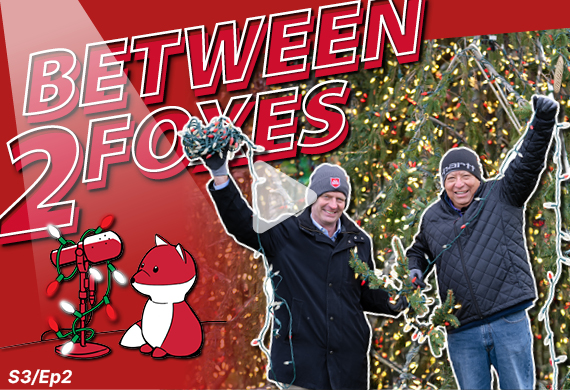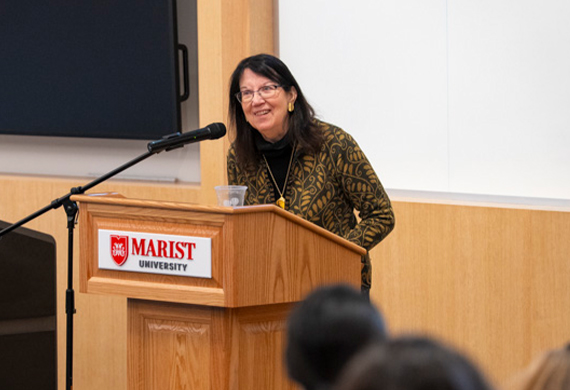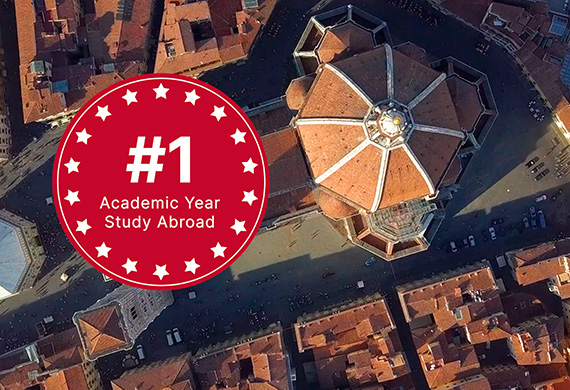No Horsing Around: Marist’s Growing Equestrian Team Goes to National Competition
May 29, 2018 – Marist is known for many things: a beautiful campus, stunning views of the Hudson River, a strong basketball program, the annual Silver Needle fashion show, and its branch campus in Florence, Italy. But a lot of people don’t realize that the College also has a thriving equestrian team.
Coached by Clare Knapp ‘03, the Marist Equestrian Team has grown exponentially in the last 10 years. In 2008, there were six members, and now there are 30-35 student-athletes competing for team and individual championships.
The College participates in the Intercollegiate Horse Shows Association (IHSA) competitions, traveling throughout New York, New Jersey, and Pennsylvania during the regular season. IHSA’s mission statement states, “Any college student should be able to participate in horse shows regardless of his or her financial status or riding level. Emphasis is on learning, sportsmanship, and fun. Competition plays a role but the students’ enthusiasm and team spirit are the major factors. The objective of IHSA competition is to offer the opportunity to riders in their first years of riding as well as to students with show experience. Eliminating the expense of shipping or even owning horses puts IHSA competitions within reach of many who would otherwise miss the equestrian experience.”
The Marist team is similarly committed to inclusivity: riders of all levels and backgrounds are represented. Knapp notes that as an IHSA team, the group benefits from having all types of riders. “We not only welcome beginners, we need them!” she said. “It behooves a team to have strength at all levels. Teams earn points in every category of riding so having walk trot riders—those who are new to riding—is as important to the team score as the advanced open level riders.”
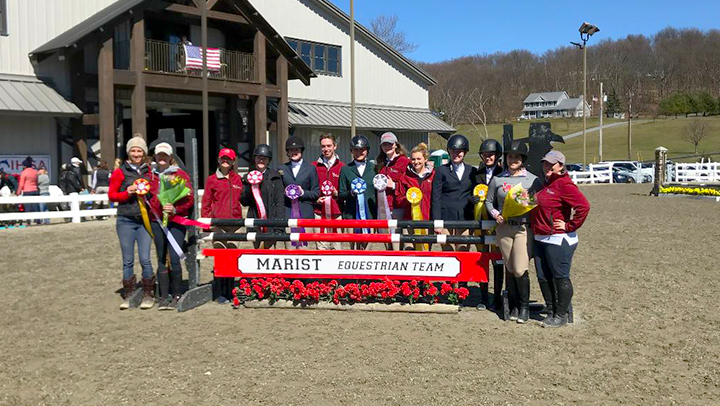
Knapp started coaching the Marist team in 2008. At the time, it was a small group and participating in competitions was not as organized, nor as supported in hunt seat equitation training. A life-long rider herself, Knapp was able to move the team to her family’s farm, Crosswinds Equestrian Center, in nearby Lagrangeville. Crosswinds currently has 16 lesson horses the team utilizes in addition to 30 privately owned horses. , and team members typically practice there twice per week, though some individuals ride more, and the opportunity to board personal horses is also available.
The team is comprised of students who have been riding since early childhood, those with some riding experience, and others who “never touched a horse until they arrived at Marist,” said Knapp. She said that team members excel at building bonds and working together, with more experienced riders helping novices—and even learning from them. “It’s a great group of women and men, and it is amazing to see their dedication and desire to succeed,” said Knapp.
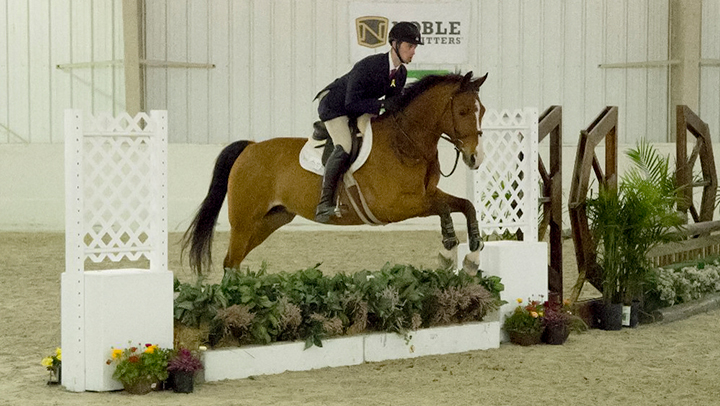
National Competition
This year, for the first time, the team competed in the IHSA Nationals in Harrisburg, Pennsylvania. Tristen Cascio ’20 placed 20th overall, and one of the team’s horses, Tito, won the final class of the show. Having riders and horses of this caliber has helped propel the Marist program onto the national scene. In the last few years, the Marist team has earned multiple Championships and has been invited to, and won, against the country’s top equestrian programs.
Knapp is extremely proud of her riders. “The growth of the Marist program has really been accelerated in the last few years. We’re at the point of seeing national recognition,” she explained, “And the incoming freshman class this fall looks to be our strongest yet.”
Life Skills
Competing in the IHSA is different than other types of riding in that riders need to be highly adaptable. “When you attend competitions, horses’ names are drawn completely at random, so you need to be strong in your skill set because you don’t know what horse you’ll be riding,” Knapp explained.
Part of practicing is having riders get comfortable with and understanding different horses in a short amount of time. Knapp sees this as more than learning good horsemanship. “It’s training for life,” she explained. “These skills transfer into the real world—our riders learn adaptability, flexibility, and how to respond to change in a dynamic way. Those are things we all need.”

